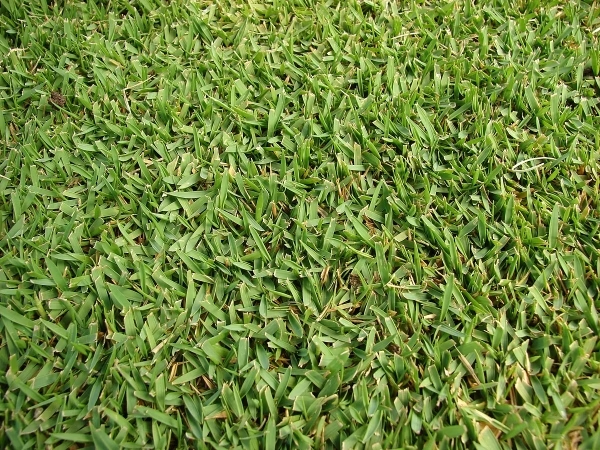
Zoysia Grass
Botanical Name
:
Zoysia spp.
Plant Type
:
Warm-season perennial grass
Seasons
:
Active growth during late spring and summer; enters dormancy and turns brown from mid-autumn through mid-spring
Sun Level
:
6–8 hours of full sun daily
Ideal Soil Temperature for Planting
:
Plant when soil temperatures consistently reach 70°F (21°C) or higher, typically in late spring to early summer
Soil Type
:
Adapts to a wide range of soils but prefers well-draining, sandy or loamy soils
Hardiness Zones
:
Zones 6 to 9, it experiences extended dormancy periods in cooler temperatures
Germination
:
Establishes slowly, commonly propagated through sod or plugs due to slow seed germination and establishment
P.H. Level
:
6.0–6.5
Water/Irrigation
:
Approximately 1 inch of water per week during active growth but may need up to 2 inches during extreme heat. Avoid overwatering to prevent fungal diseases
Fertilization
:
Fertilize with up to 2 pounds of nitrogen per 1,000 square feet per year, from midspring to midsummer. Avoid late-season fertilization to prevent excessive growth before dormancy
Habit
:
Spreads via stolons and rhizomes, forming a dense, carpet-like turf
Final Plant Height
:
Typically maintained at 1 to 2.5 inches; if left unmowed, can reach up to 6 inches. Coarse-bladed zoysiagrass needs to be mowed higher, while narrow-leafed zoysiagrass can tolerate lower mowing heights
Spread
:
Aggressively spreads through stolons and rhizomes and can invade adjacent areas if not properly managed
Spacing
:
Plant plugs 6–12 inches apart, seed at 1–2 lbs per 1,000 sq ft.
Flowers
:
Produces inconspicuous seed heads that are generally not noticeable in well-maintained lawns
Attracts
:
Primarily used for turf applications
Uses
:
Ideal for lawns, golf courses, erosion control, and sports fields due to its dense growth and wear tolerance
Companions
:
Often grown alone(monoculture) due to its aggressive spreading nature
Pruning
:
Requires regular mowing to maintain desired height. Mow at 1 to 2.5 inches, ensuring not to remove more than one-third of the leaf blade per mowing
Toxicity
:
Non-toxic to humans and pets
Pests
:
Generally resistant to most pests, however, may occasionally encounter issues with billbugs or grubs
Diseases
:
Susceptible to fungal diseases such as Zoysia patch, especially in poorly drained soils or with overwatering
Additional Info
:
While Zoysiagrass can be grown in Ohio, its extended dormancy period may result in a brown lawn for a significant part of the year. Homeowners should weigh the aesthetic considerations and maintenance requirements before choosing Zoysiagrass for their lawns.
Botanical Name
:
Zoysia spp.
Plant Type
:
Warm-season perennial grass
Seasons
:
Active growth during late spring and summer; enters dormancy and turns brown from mid-autumn through mid-spring
Sun Level
:
6–8 hours of full sun daily
Ideal Soil Temperature for Planting
:
Plant when soil temperatures consistently reach 70°F (21°C) or higher, typically in late spring to early summer
Soil Type
:
Adapts to a wide range of soils but prefers well-draining, sandy or loamy soils
Hardiness Zones
:
Zones 6 to 9, it experiences extended dormancy periods in cooler temperatures
Germination
:
Establishes slowly, commonly propagated through sod or plugs due to slow seed germination and establishment
P.H. Level
:
6.0–6.5
Water/Irrigation
:
Approximately 1 inch of water per week during active growth but may need up to 2 inches during extreme heat. Avoid overwatering to prevent fungal diseases
Fertilization
:
Fertilize with up to 2 pounds of nitrogen per 1,000 square feet per year, from midspring to midsummer. Avoid late-season fertilization to prevent excessive growth before dormancy
Habit
:
Spreads via stolons and rhizomes, forming a dense, carpet-like turf
Final Plant Height
:
Typically maintained at 1 to 2.5 inches; if left unmowed, can reach up to 6 inches. Coarse-bladed zoysiagrass needs to be mowed higher, while narrow-leafed zoysiagrass can tolerate lower mowing heights
Spread
:
Aggressively spreads through stolons and rhizomes and can invade adjacent areas if not properly managed
Spacing
:
Plant plugs 6–12 inches apart, seed at 1–2 lbs per 1,000 sq ft.
Flowers
:
Produces inconspicuous seed heads that are generally not noticeable in well-maintained lawns
Attracts
:
Primarily used for turf applications
Uses
:
Ideal for lawns, golf courses, erosion control, and sports fields due to its dense growth and wear tolerance
Companions
:
Often grown alone(monoculture) due to its aggressive spreading nature
Pruning
:
Requires regular mowing to maintain desired height. Mow at 1 to 2.5 inches, ensuring not to remove more than one-third of the leaf blade per mowing
Toxicity
:
Non-toxic to humans and pets
Pests
:
Generally resistant to most pests, however, may occasionally encounter issues with billbugs or grubs
Diseases
:
Susceptible to fungal diseases such as Zoysia patch, especially in poorly drained soils or with overwatering
Additional Info
:
While Zoysiagrass can be grown in Ohio, its extended dormancy period may result in a brown lawn for a significant part of the year. Homeowners should weigh the aesthetic considerations and maintenance requirements before choosing Zoysiagrass for their lawns.
Written by Salome Wapukha – https://www.linkedin.com/in/salome-wapukha-556700193/

